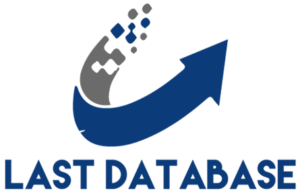Writing great content may not be enough. That’s because the internet creates 2.5 Tips for Writing Headlines for SEO quintillion bytes of data every day . You could write well-crafted content that will never rank in SEO because it’s not optimized for reading and search engines. Then why bother creating content at all?
A critical element of well-written and optimized small business email list content is the effective use of headings. Good headings serve many functions, including grabbing readers’ attention, encouraging them to continue reading the page, and telling search engines about the structure of your content to improve rankings.
If you’re looking to use H1-H4 tags in your articles, check out this guide to help you write more effective titles that are both SEO-friendly and reader-friendly.
What are headings?
Before we dive into how to write good titles, you need to have a good understanding of what a title is. Title tags are big, short phrases or sentences that separate the content of a page.
The size of headings depends on their although it isn’t that hard for smaller importance. For example, higher-level headings are larger, which tells the reader to pay attention, while less important headings are displayed in a smaller font because they are located under other content.
Headings create structure for your content, making it easier for readers to digest. Headings also provide important information for search engines. When you place a heading in your content, it updates the HTML code with information about whether it is an H1, H2, H3, etc.
Updating headings in content management systems (CMS) like WordPress is incredibly easy. You use a WYSIWYG editor to select a heading from a drop-down list. You can also draft content in Google Docs and select categories for quicker copying and pasting into the CMS. You don’t need to know anything about website coding to add categories to your content.
Search engines use headings when scanning content. This helps search engines understand the topic of a page and prioritize the information on it.
When titles contain important phrases or keywords, the search engine understands that this information is important. The higher up in the tag hierarchy a keyword is, the more important the search engine believes it is in relation to the content.
Why Headlines Are Important for SEO
Google’s goal is to direct users to content sault data that answers their queries. So it looks for the best content that is related to a specific keyword. In August 2021, Google announced that it would rewrite title tags in search results , often using the page’s H1 text for greater relevance. In other cases, the search engine may replace the title tag with the anchor text of an internal link.
Now that algorithms have become more complex, it’s more important than ever to pay close attention to title tags.
From a reader’s perspective, heading tags make it easier to read your content. Research shows that about 80% of all readers skim online content . Having strong headings helps readers learn more about what’s in each section of content and quickly reach their goals.
The lack of headings makes it difficult for readers to understand the hierarchy of content. This means they won’t be able to quickly figure out which content answers their question and will leave your site.
Headings are an important element of the user experience on your site. But you need to make sure they have a realistic hierarchy to show the reader the weight of the content.






